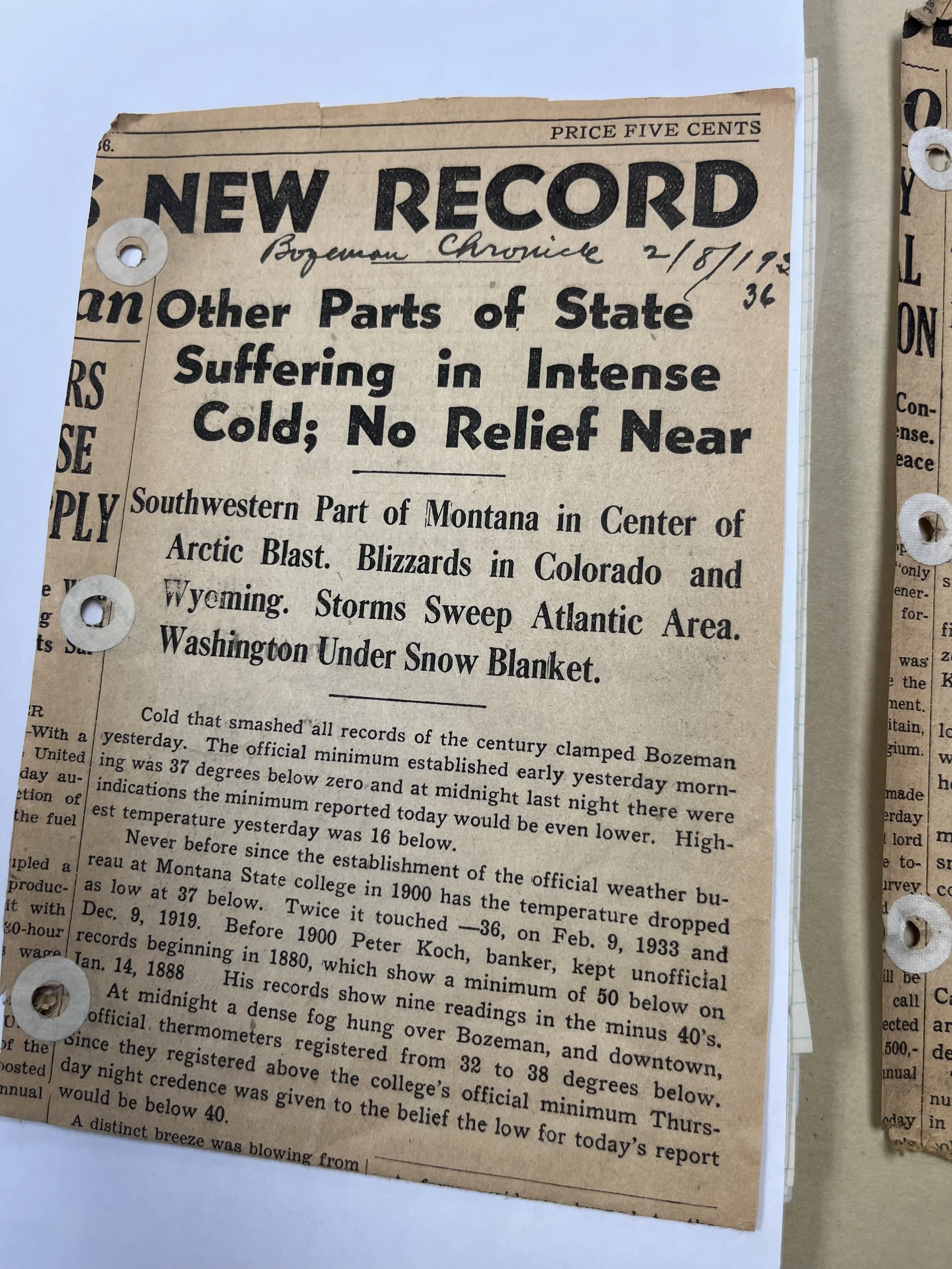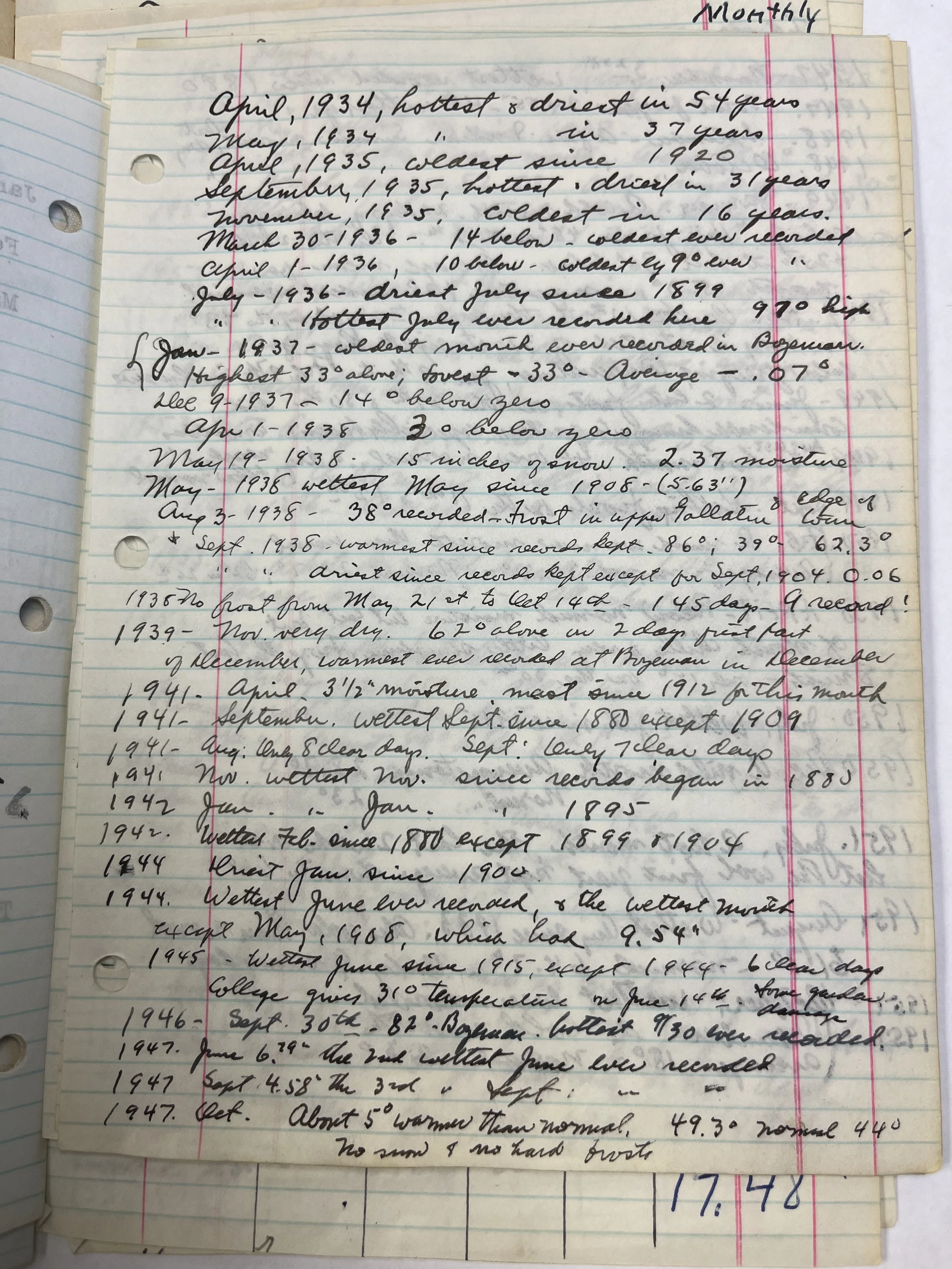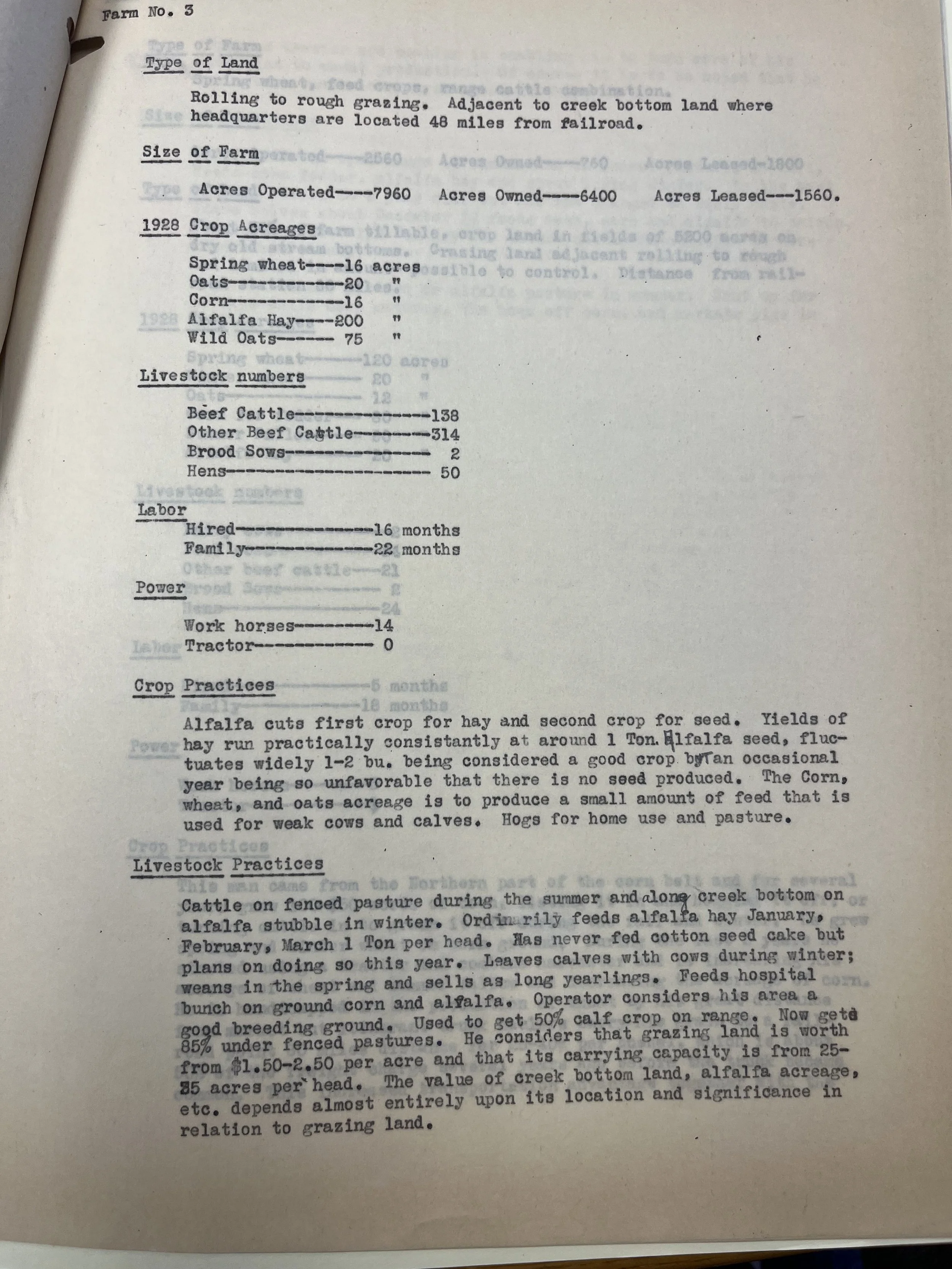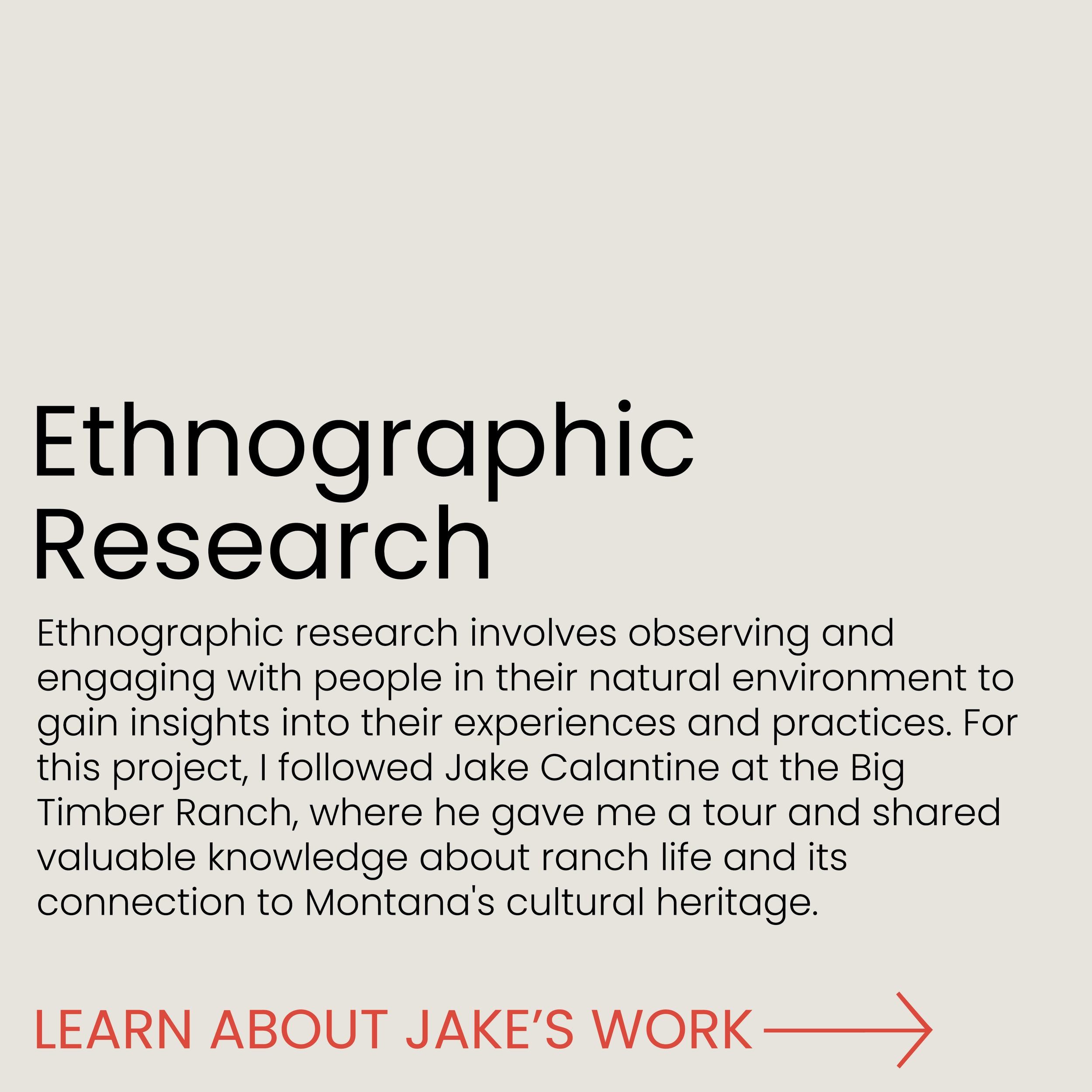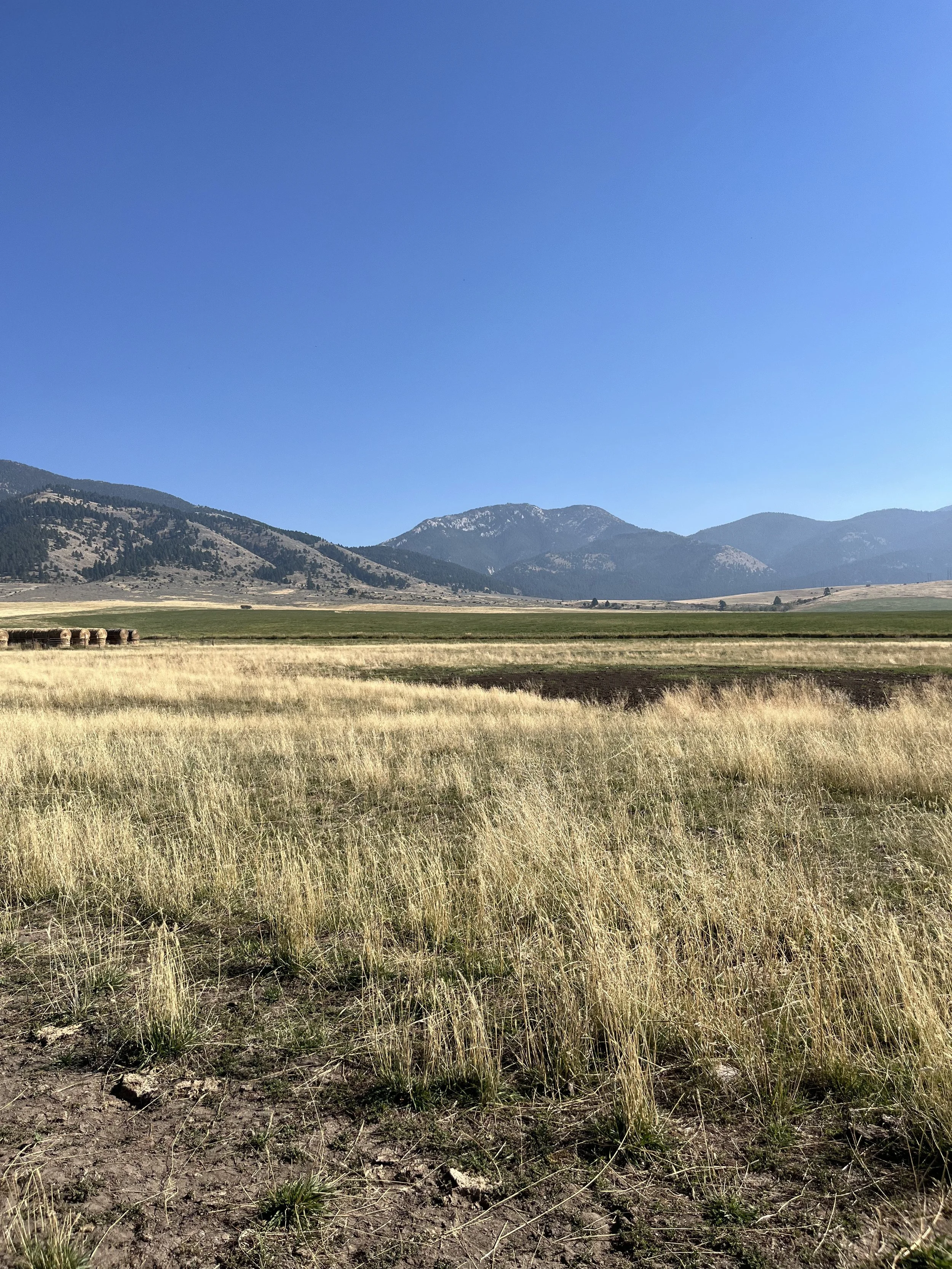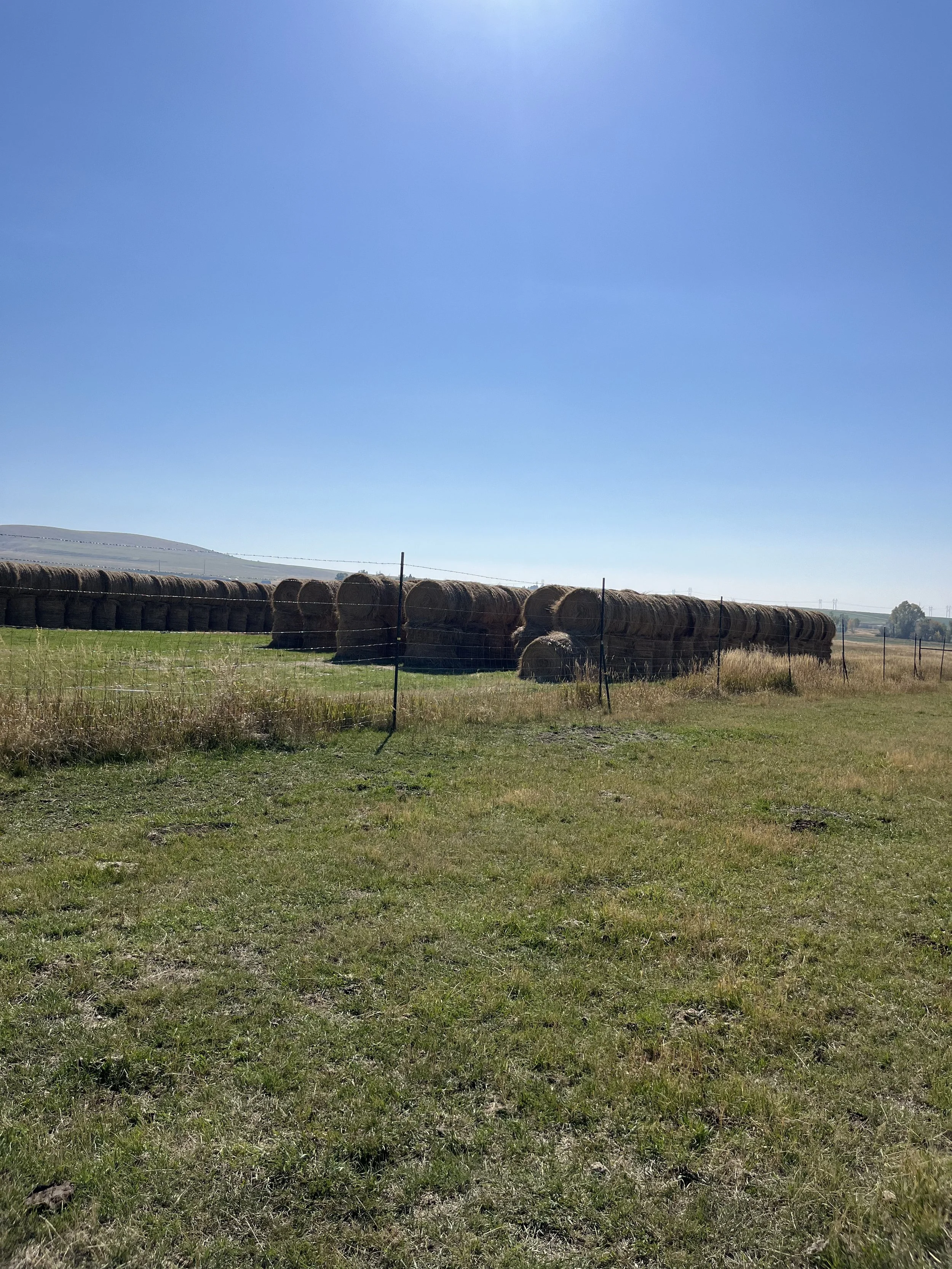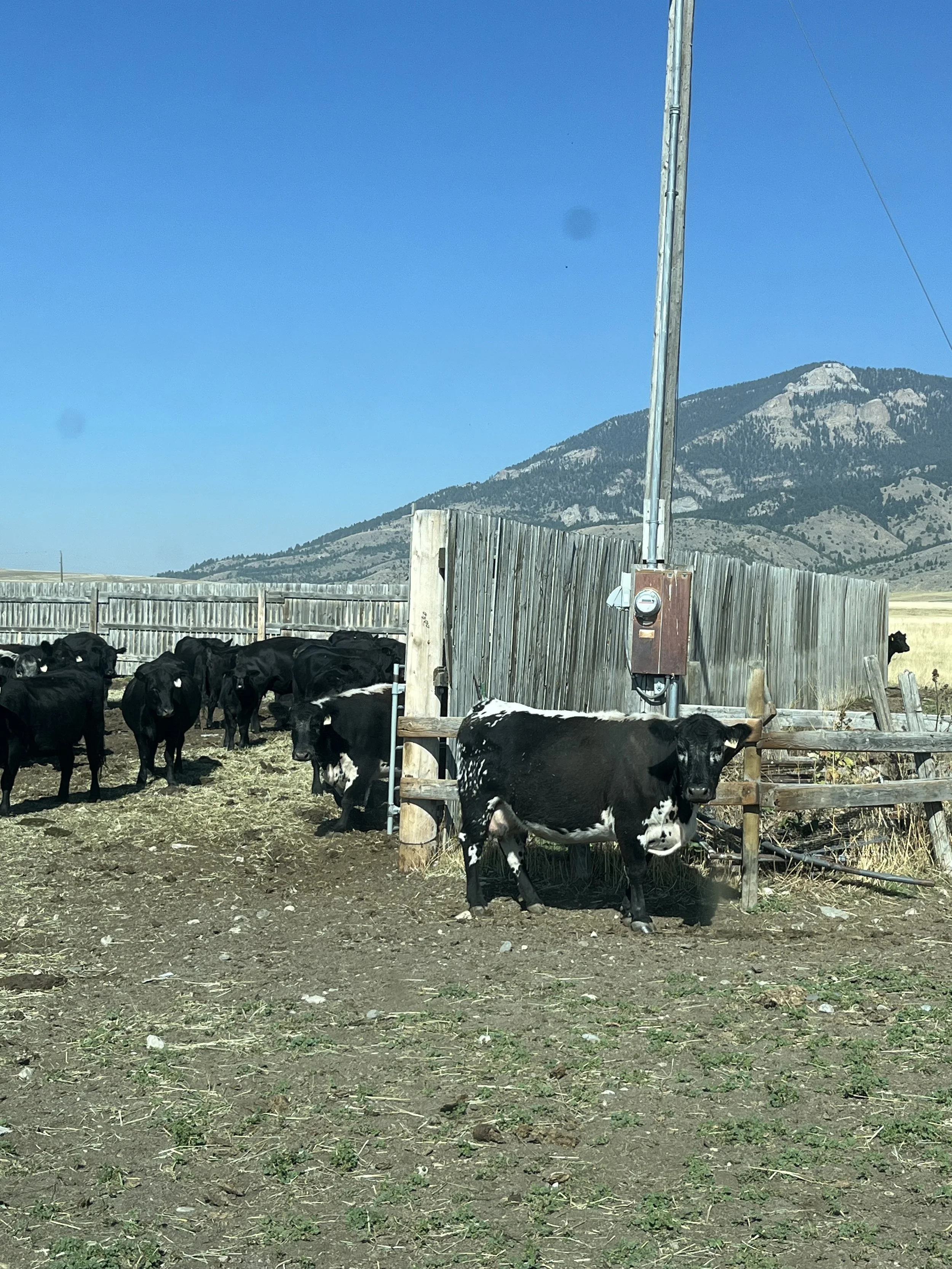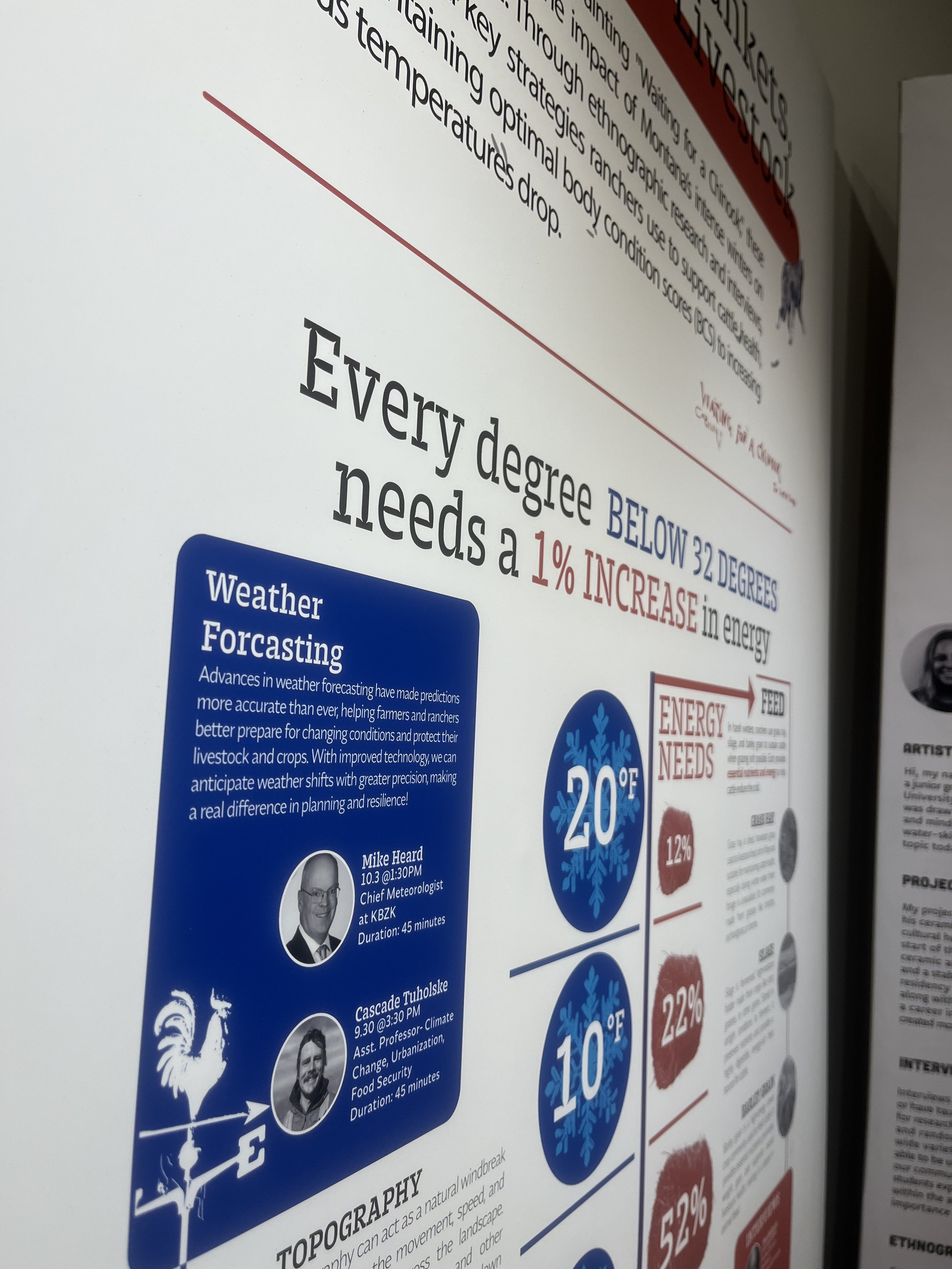
Ethnographic Studies
This project combined ethnographic research and design to explore Montana's cultural heritage through tangible, intangible, and natural themes. I conducted in-depth studies of local communities, employing anthropologic and ethnographic practices to understand the intersection of design and culture in a modern context. The findings were documented and transformed into a visual exhibition titled Rooted In Place: Montana Heritage. I created large-format banners to present my research to a public audience, focusing on effective data visualization, hierarchy, typography, and display design.
Date: Sept. 2024-Nov.2024
Class: Design for Society
Project Type: Research-Based Design, Exhibition Design
1. Deciding a Research Topic
I began this project by researching Montana’s cultural heritage, focusing on its tangible, intangible, and natural aspects. This involved compiling a comprehensive list of elements within each category to form the foundation of my work. From this research, I selected a specific element to focus on and developed a central topic to guide the project.
Tangible Culture: Buildings, Monuments, Archive Material, Books, Works of Art, Artifacts
Intangible Culture: Folklore, Traditions, Language, Knowledge
Natural Heritage: Significant Landscapes, Biodiversity
I Chose…..
Charles M. Russell’s "Waiting for a Chinook (The Last of 5000)"
During the brutal winter of 1886-1887, Charlie Russell, then a cowhand in the Judith Basin, responded to his employer's inquiry about cattle conditions with a sketch of a starving bull surrounded by wolves, vividly capturing the harsh reality.
This painting helped me point in the direction of what I wanted the topic of my research to be.
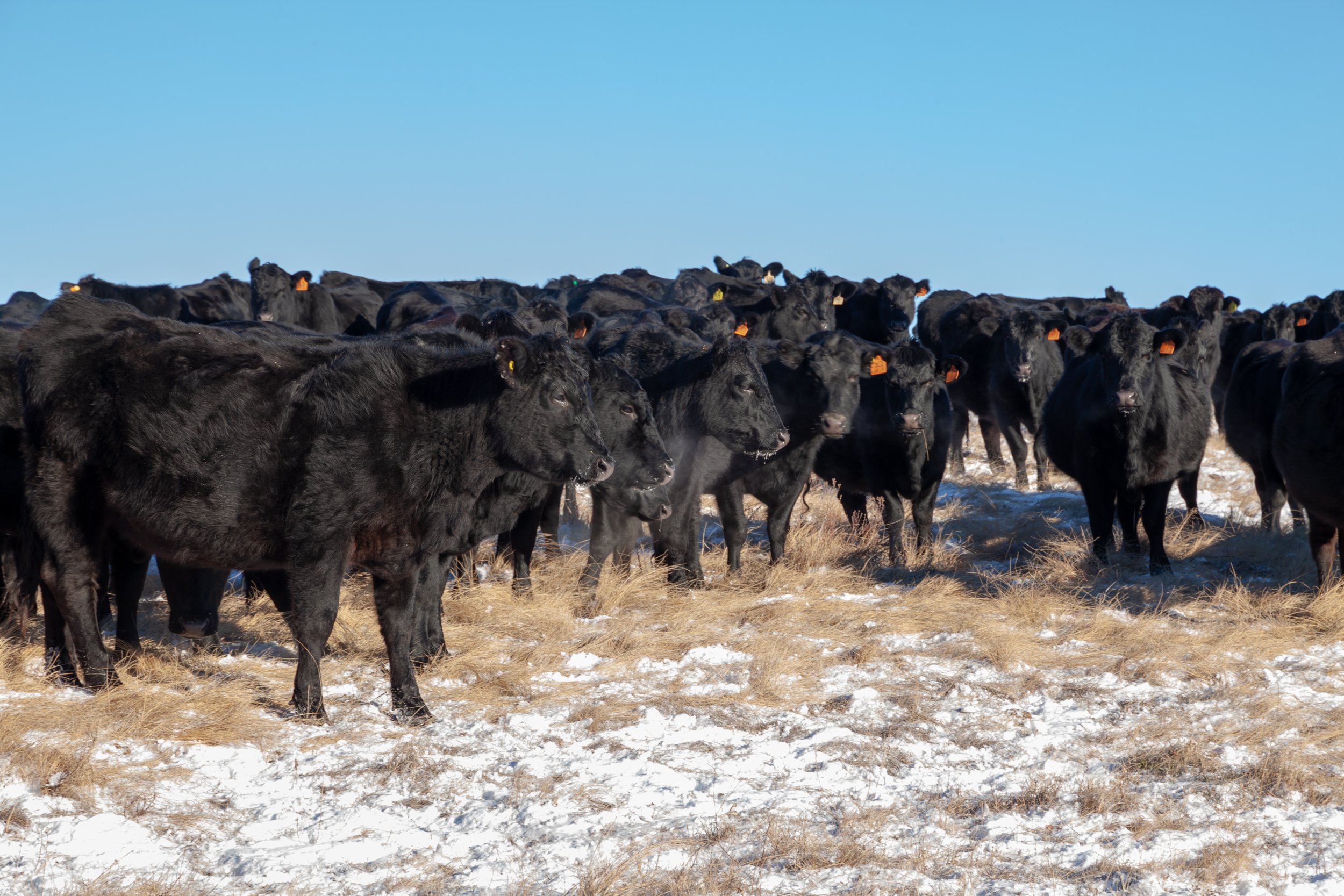
My Topic:
Harsh Winters and its Effect on Ranchers and their Cattle
2. Research
Once I finalized my topic, I began in-depth research, starting with the Special Collections at Montana State University’s library. I conducted six interviews with professionals knowledgeable about my subject and completed an ethnographic research study to gather diverse insights and perspectives.
Special Collections
Special Collections
Special Collections
3. Exhibition
After collecting and analyzing the data, I compiled it into a comprehensive banner featuring infographics to effectively communicate my findings at an exhibition. I had to make sure it had an interactive element and a take away item.
For my final exhibition banner, I incorporated an interactive element using transparent overlays. These layers allowed viewers to explore a cow's Body Condition Score (BCS) visually. As they lifted each overlay, it revealed a progression to a lower BCS, making the concept more engaging and informative.
Interactive Element
In addition to my exhibition banner, I created a takeaway item to further engage the audience. I designed small calendars that highlight the tasks ranchers perform each month throughout the year, providing an informative and practical glimpse into their annual routines.
Takeaway Item






